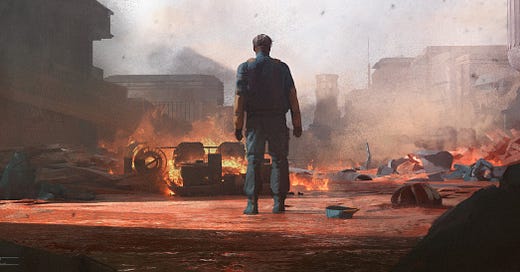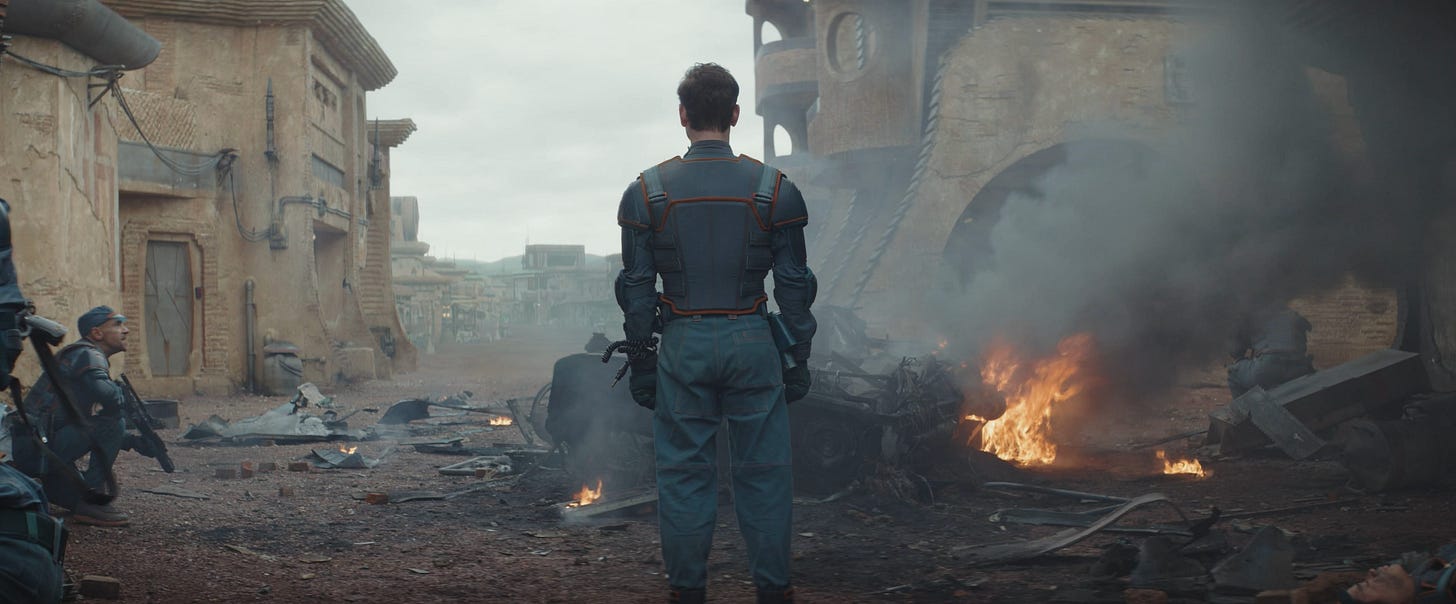This Is the Exact Moment I Fell in Love With Andor
Andor redefines the Star Wars universe with a dark, gripping tale of power and ambition. By the end of the first three episodes, there's a moment that’s etched into my memory forever.
I was intrigued by Andor from the beginning. A spy thriller in the morally grey areas of the Star Wars universe that leads up to Rogue One? Sign me up. But it wasn’t until the end of the third episode that I fell completely in love with it. Because that’s when I first witnessed Tony Gilroy’s beautiful yet ruthless and shocking series in full motion. Everything that had been laid out in the previous episodes clicked into place perfectly. Suddenly I saw the whole picture of this Star Wars story with my own eyes – and in front of it was the most unlikely character: Syril Karn.
Andor is told through corporate structures and power imbalances. Exploitation and oppression drive the fascist regime that rules the galaxy and ensures that the rift between the working class on Ferrix and the powerful on Coruscant is even wider than the hole torn into Cassian’s homeworld, Kenari. In each scene, we experience the use and abuse of power, as well as the resulting assaults and errors. Gilroy doesn't merely line up one abyss after another, but finds an ambivalent character for each conflict, juxtaposing the oppressive structures with something fragile.
One of the most compelling characters in this regard is Syril Karn, played by Kyle Soller, who is called upon to sweep the introductory murder under the carpet. Preox-Morlana wants to shine in front of the Empire with good numbers, but the ambitious and misguided young man takes matters into his own hands. He is a worker who seizes the opportunity to prove himself to those who mock his aspiration. Syril believes in the cause of the Empire and wants to bring order to the galaxy. In the end, however, he’s left with nothing but the ruins of his own making.
Bewilderment and despair pulsate in his eyes as he faces the failure of what was meant to be his long-overdue and well-deserved promotion. Instead of order, he has brought fear, violence and death. Pure chaos. His longing for recognition leads to the destruction of a community – something no uniform could ever provide him. As we look over Syril’s shoulder and witness the world in flames in this irreversible and devastating act – that was an extraordinary moment to witness, where all the individual parts of the series culminated in a thunderous crescendo.
I was all the more thrilled when I found out that the moment could be directly traced back to a piece of concept art by Chester Carr, which once again shows how valuable the careful preliminary work of the concept art team is when it comes to designing a Star Wars series or a Star Wars film. Not just spaceships and planets are created here, but entire images that inform the filmmaking and lead the story to a certain point on a visual level. In fact, it's not uncommon for many of the iconic visuals from the Star Wars universe to have their origins in a drawing.
Concept art, storyboards, previsualization, animatics and more – before the first cameras roll, there’s a lot going on in the early stages of production where the different departments create the framework of a film. In Star Wars, the close collaboration between filmmaker and concept artist has been a vital part of the creative process from the very beginning, dating back to George Lucas and Ralph McQuarrie in the 1970s. This tradition has continued over the decades and is no different now with Andor, as the brilliant shot composition above shows.
Looking back, the subtle differences are especially interesting. Carr's concept art brings an unexpected amount of warmth despite the destruction, while the scene in the series is much colder, amplifying its sense of hopelessness. The orange-brown tones are gone. Instead, a pale bluish-grey has taken their place. That is exactly what Gilroy is aiming for. This rebellion is not an easy one. In Andor, we lose ourselves in the moral grey areas and a web of contradictions that sometimes work together, sometimes against one another – knowingly or unknowingly.
Much has been said about how Andor changes the way we see Rogue One and Star Wars in general. The genius of Gilroy’s writing – and that of his team – is that they don't just think in one direction. With each page of the script, we not only take a step forward, but also pause for a moment. Again and again, the series looks back at its earlier events and sheds new light on them, allowing characters and events to take on increasingly complex traits. That’s exactly what happens in this concept art: Syril is literally confronted with the consequences of his actions.
Moreover, Carr’s devastating piece already contains one of the series’ most distinctive visual signatures: the back shot. In Andor, we often follow characters who are centered in the frame, seen from behind. No faces, just the backs of their heads and their (upper) bodies. Sometimes they become moving silhouettes in an intricate labyrinth of hierarchies. Sometimes they’re navigating an ocean of distrust. These shots feel unexpectedly close, and yet distant. They’re a brilliant tool for locating the characters in their surroundings – and Andor has cultivated them to perfection.
Image credit: Lucasfilm







I love how much this shot lets the destruction of the previous scenes really sink in. Rather than swiftly moving on it makes you feel it and appreciate how terrible this is for Syril and for Ferrix, and how much worse it might get for Ferrix when the Empire gets wind.